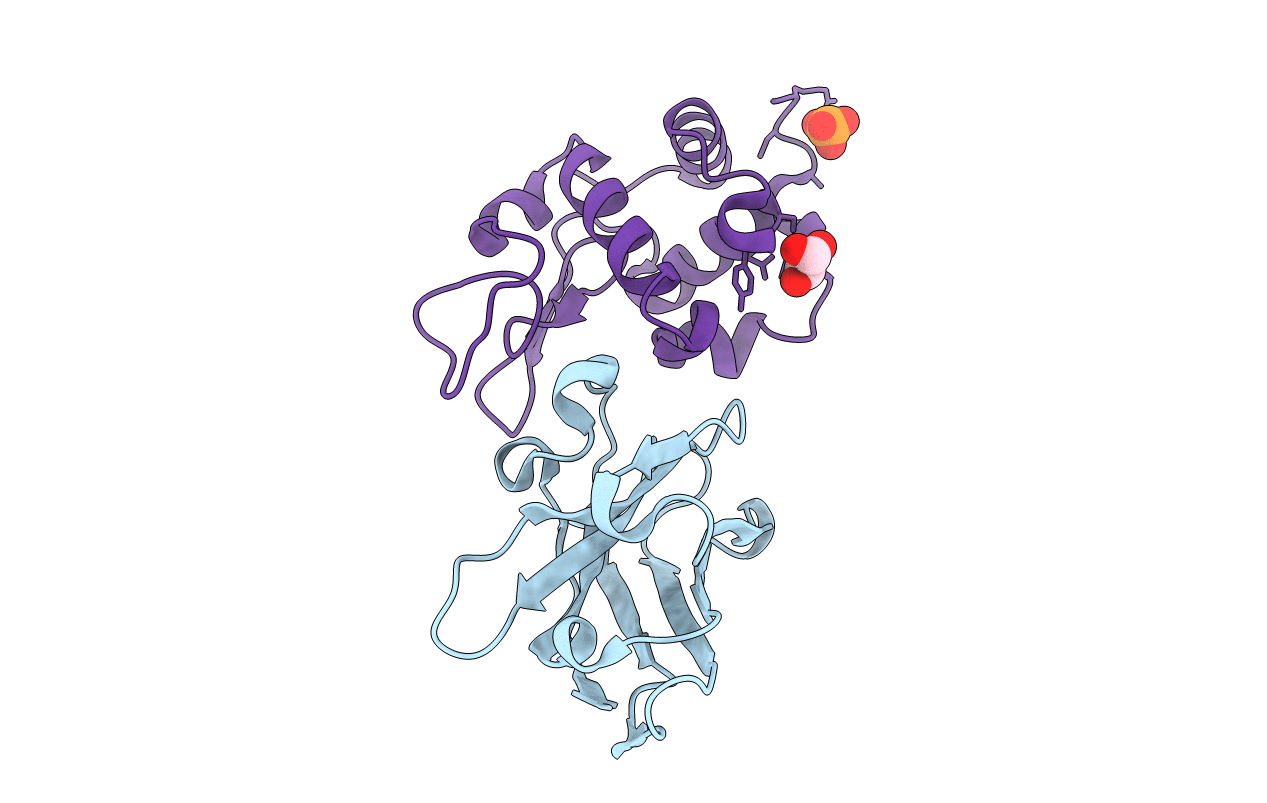
Deposition Date
2005-06-03
Release Date
2006-04-04
Last Version Date
2024-10-30
Entry Detail
PDB ID:
1ZVY
Keywords:
Title:
Crystal structure of the VHH D3-L11 in complex with hen egg white lysozyme
Biological Source:
Source Organism:
Camelus dromedarius (Taxon ID: 9838)
Gallus gallus (Taxon ID: 9031)
Gallus gallus (Taxon ID: 9031)
Host Organism:
Method Details:
Experimental Method:
Resolution:
1.63 Å
R-Value Free:
0.22
R-Value Work:
0.20
R-Value Observed:
0.20
Space Group:
P 1 21 1


